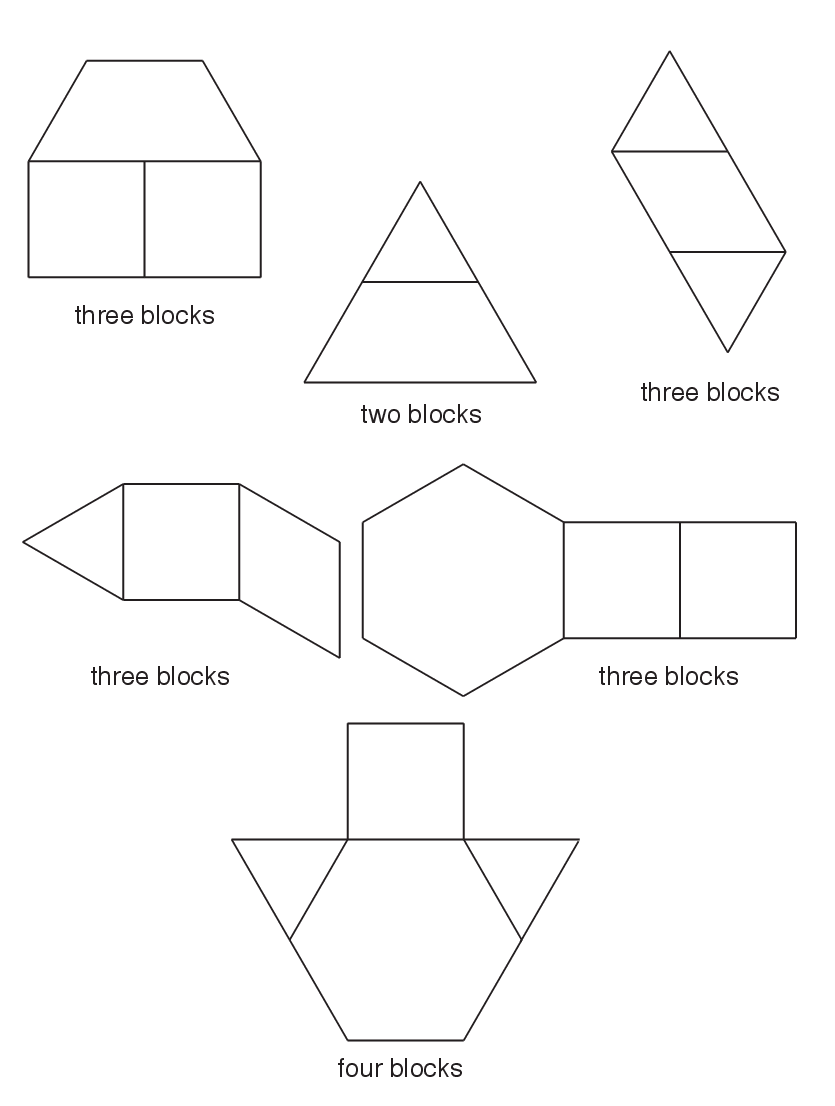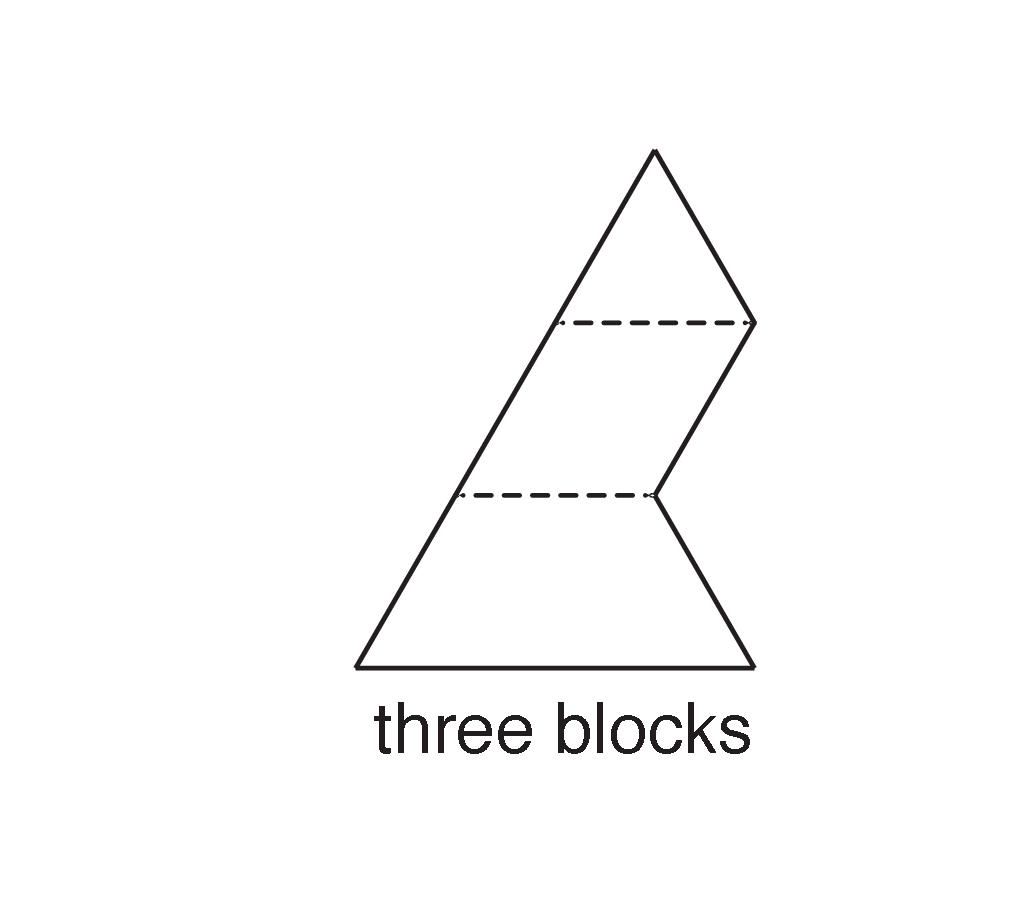Mystery Shapes
Est. Class Sessions: 2Developing the Lesson
Make Mystery Shapes. Display a set of pattern blocks you will use to make mystery figures. Display a shape made of three pattern blocks without showing which pattern blocks compose the shape. Display the silhouette of the shape made with pattern blocks or display one of the shapes on the Mystery Shapes Master. See the TIMS Tip and Figure 1. Distribute sets of blocks to student pairs and ask them to construct the figure displayed using three pattern blocks.
As student pairs are working, circulate throughout the room to observe how they are making the shape and to answer questions. Use prompts to support students as they try to determine which blocks to use.
Ask:
To assess students' reasoning, ask:
Discuss Mystery Shape Solutions. After adequate time, ask a pair of students to display and share their solution and thinking. Ask additional pairs to share other ways to solve the mystery figure. Aid students in justifying their solution using properties of shapes (number of sides, length of sides, number of corners, relative size of corners) as needed using prompts similar to those used as you circulated through the room while students were working. Compare and contrast a few solutions.
Ask:
Repeat this process for at least two more shapes by displaying the shapes on the Mystery Shapes Master or showing the silhouette of your own shapes made with pattern blocks. Display just one figure at a time. Then share and compare solutions before moving on to the next shape. Include figures made from two, three, or four pattern blocks. Tell students the number of blocks to use for each figure.
















